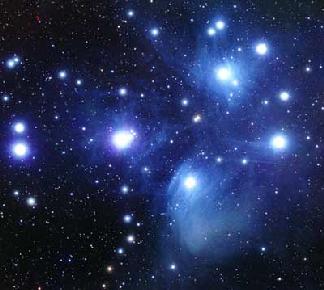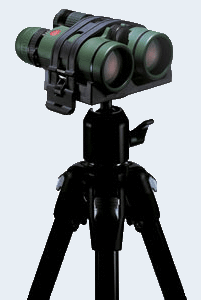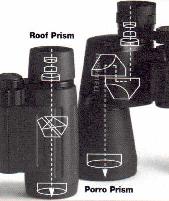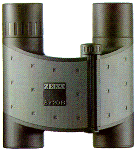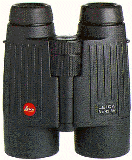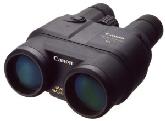Advice on buying and using binoculars
Why use Binoculars?
Put in a nutshell, they are a wonderful aid to learning the night sky and may well give you the best view possible of some of the night sky wonders such as the Andromeda Nebula and Comets such as Hale Bopp. The fact that both your eyes are used can be a real asset too. They allow you to sweep large areas of sky and observe objects, such as the Pleiades Cluster in Taurus that are simply too large to be seen in the field of view of most telescopes.
How do binoculars differ?
There is a bewildering array of binoculars to choose from. Lets first discuss the specification that defines the characteristics of a pair of binoculars and then point out the ideal specification for some of the different uses to which they are put. You can skip this if you like and drop down to the section headed "Whats best for my requirements?"
Magnification
This is the first number given in the basic specification of a pair of binoculars. Typical numbers are 8 and 10. One might think that the bigger the magnification the better - this is generally not the case. The larger the magnification the smaller the field of view (see below) but, perhaps even more important, the more the image will appear to jump about. Unless the binoculars are to be mounted on a tripod or are of the new image stabilising type, a magnification greater than 10 is not to be recommended.
Objective Size
This is simply the diameter of the objective (front) lens measured in mm and is the second number in the specification - for example a pair of 8 x 40 binoculars has a magnification of 8 times and an objective diameter of 40mm. The larger the diameter is, the more light that is collected and so, in principle, the dimmer the objects that can be seen - but see also the section about "Exit Pupil". Thus large objective lenses will be an asset for astronomical use, but as a consequence the size and weight of the binoculars will increase. The most common objective sizes are 20, 35-40 and 50 mm. The light collected increases as the square of the diameter, so a pair of 50mm binoculars will collect over 6 times as much light as a 20mm pair.
Field of view
This depends on firstly the magnification - the larger the magnification the smaller the field of view, and secondly the design of the eyepiece. In the specification it may say "wide field" or "extra wide field". This implies that, for a given magnification, you will see a larger field of view. The field of view depends on the complexity - and hence cost - of the eyepieces used in the binoculars. A simple eyepiece may have a field of view of 5 degrees whilst a very complex one might have a field of view of up to 9 degrees across. In the latter case you will actually see over 3 times more sky at one time! The field of view is often given, as for example, 135m at 1000m. The larger the first number, the greater the field of view. For almost all uses, including astronomical, its better to go for a wide field of view, but do expect to pay a little more.
Eye Relief
This is almost never discussed, but can be important if, as many people, you wear glasses. With many binoculars, if you have your glasses on, even if the eye caps are folded back you will find that you cannot see the whole of the nominal field of view. Obviously you can take your glasses off, but that can be a nuisance and, if you suffer from significant astigmatism, may not give you as good an image as you could see with the help of your glasses. The solution is to get binoculars with good eye-relief. This tends to be the case with more expensive binoculars - often you will need to try the binoculars out as it is often not mentioned in the specifications. You know when you are seeing the whole field of view when the edge of the field is a sharp transition from image to black.
Lens coatings
The size of the objective determines how much light enters the binoculars. Not all will leave it. Some will be reflected at the various glass/air interfaces in the binoculars - prisms as well as lenses. This light is scattered and will reduce the contrast of the image as the darker parts of the image become apparently lighter. Good binoculars will have lenses and prisms which are multi-coated to minimise reflections thus reducing the scattered light and giving much better images. Naturally this makes them cost more.
Exit Pupil
This is the diameter of the "cone" (more like a cylinder) of light that leaves the eyepiece and enters the eye. Its diameter is given by simply dividing the size of the objective by the magnification. Lets take two examples: pairs of 8 x 20 and 8 x 40 binoculars. The first will have an exit diameter of 20mm/8 = 2.5mm and the second 40mm/8 = 5mm. The light that can enter the eye is determined by the iris diameter which in daytime is about 2.5mm diameter - so all the light from the 8 x 20 pair will enter it but only a quarter of the light collected by the 8 x 40 will be able to enter it - there is thus no point is using large diameter objectives in broad daylight! A lightweight pair of 8 x 20 binoculars cannot really be beaten. When dark, the iris opens up to allow in more light into the eye and reaches about 5mm in diameter. Then all the light from the 8 x 40 (or 10 x 50) binoculars can enter the eye. So for astronomical use it is worth having a pair of binoculars with larger objectives.
Prisms
In the conventional design of binoculars, Porro prisms are used. These can be made of different glass types. The BAK-4 glass prisms give better performace than the cheaper BAK-7 types. More recently, roof prisms have begun to be used to give very compact designs, but to work well they must be manufactured with very high precision - hence good quality binoculars using this prism type are expensive.
Whats best for my requirements?
Daytime Travel and Sightseeing
A lightweight pair of 8 x 20 or 8 x 21 with wide field of view and good eye relief if you wear glasses. High quality makes will cost about £240.
Bird Watching
This is likely to include observations at dawn and dusk so more light capture is an advantage. 8 x 40 binoculars with a very wide field are ideal. The abilty to focuss closely is also an advantage - perhaps down to 3m. You also want good eye relief if you wear glasses. Good pairs will cost over £500.
Astronomy
A large objective is obviously an advantage so 8 x 40 or 10 x 50 is ideal. A wide field of view is important so that you see more sky. If you want to wear glasses when observing then they should provide good eye relief. Top quality pairs will cost over 500 pounds. The galaxy M31 is another astronomical object that can best be seen with binoculars.
See more of Robert Gendler's wonderful images: The Universe in Colour.
In binoculars you nearly always get what you pay for, in general, the higher cost binoculars will give clearer, more contrasty and sharper images and retain their allignment for longer than cheap pairs.
Top Makes
A selection would certainly include Leica, Canon, Nikon, Pentax, Swarovsky, Swift and Zeiss. Though less available now, Russian binoculars are very good value for money.
Image Stabilised Binoculars
Canon make a number of binoculars which include a gyro system to measure the motion of the binoculars in the hand and a movable prism group to counteract the motion. When imaged on an object, a button is pressed to bring the stabilisation into effect and the image appears fixed in the field of view. Amazing! Because stellar images, for example, stay imaged onto the same rods and cones in the retina, they are more likely to be triggered by the photons from a faint star, and it is reckoned that one can see half a magnitude fainter stars for a given aperture! The author has a pair of 15x50 Canon IS binoculars and the view of the Pleaides from a dark sight is simply stunning. (They are a little heavy though.) Canon also make a 10x30 IS pair at around 300 pounds and these are highly recommended for astronomical use and probably equivalent to unstabilised binoculars with an aperture of 40mm.
Try a Car Boot Sale
Do you really have to spend so much? No. Any pair is better than none and you can often pick up a pair of 7 x 35 or 10 x 50 binoculars for a few pounds at a car boot sale. Any with Russian markings are likely to be very well made.


